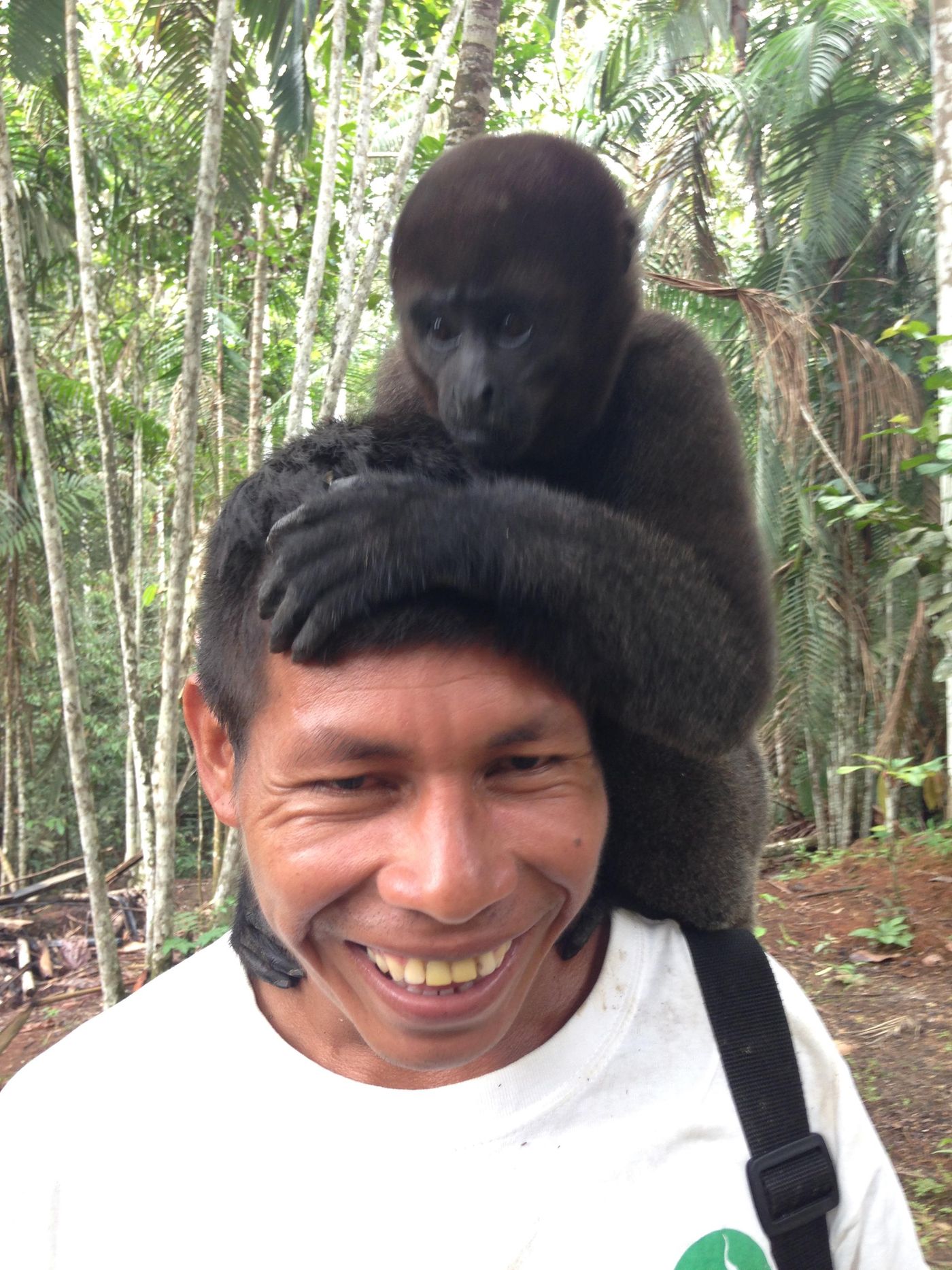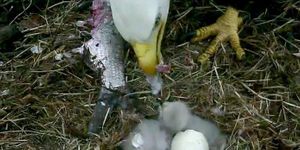There’s a wonderful sense of connection that comes from the grasp of a baby monkey’s hand in your hand. Clinging tight, its fingers only a bit smaller than a newborn human, he stares curiously at you as you observe his nails and soft leather skin, so similar to your own. The awe of holding this creature, or more of him holding onto you, lasts for hours, even after his grip loosens.

The first time I visited Fundación Maikuchiga, which lies on a wide patch of land behind the indigenous Tikuna community of Mocagua along the Amazon River in Colombia, I was bewitched by a young monkey named Camelo. The moment I walked into the unwalled cabin where he was playing and bent down, he came to me, scampering adeptly up my arm and situating himself in the nook of my elbow. He dug his sharp little fingernails into my flesh and stayed there for three hours, not even moving (as would have been polite) to defecate. After an hour or so I felt guilty that the other tourists hadn’t had the chance to get to know him. I tried to peel him off of me and hand him to another visitor. He merely twisted to avoid my grasp and resettled his small body against my neck, wrapping his tail like a collar around me. After that I was as content to leave him there as he was to stay.
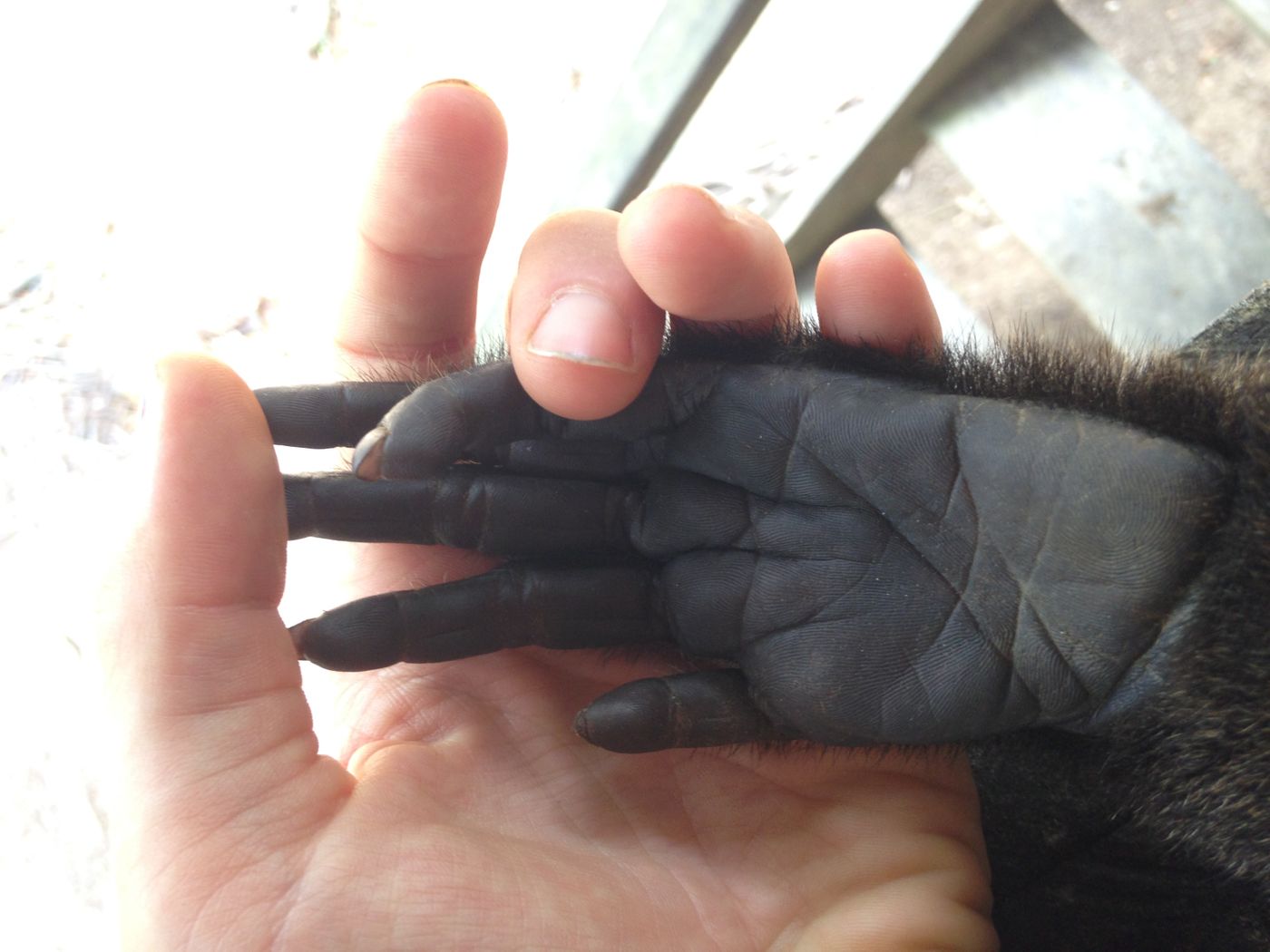
I returned to the site of Maikuchiga - which means “monkey’s story” in native Tikuna - four times to accompany tourists as part of my work as a translator for
Yoi EcoLodge. Each time I learned more about every individual monkey’s history and personality. Rafa, one of the Woolly Monkeys for whom the foundation was started to protect, is the biggest goof. A two year old male with a chronic case of FOMO (Fear of Missing Out), he is constantly interrupting others’ playtime and stealing visitors’ hats, jealous of not being the center of attention. But like many spoiled children, on his own he is sweet and affable, satisfied to ride piggyback on a walk through the forest. He was brought to the foundation when he was only four days old, after being extracted from his mother’s belly by the hunters who killed her.
Poo, a Monk Saki whose hair looks rougher than the soft fluff that it actually is, defines the word maternal. Having adopted two of the orphaned Squirrel Monkeys that were brought to the foundation, she is always grooming someone and most definitely the best hand-holder of the crew. Meanwhile Clara, an older female Woolly, is more chill, happy to laze around after the rush of a banana and guama lunch sprawled out on the floor without any regard to passersby - except if a head rub is available. Then, for sure, you too will be sprawled out right along with her for the duration of her siesta, scratching away behind her ears while she drools onto your hand with her mouth lax and eyes closed.
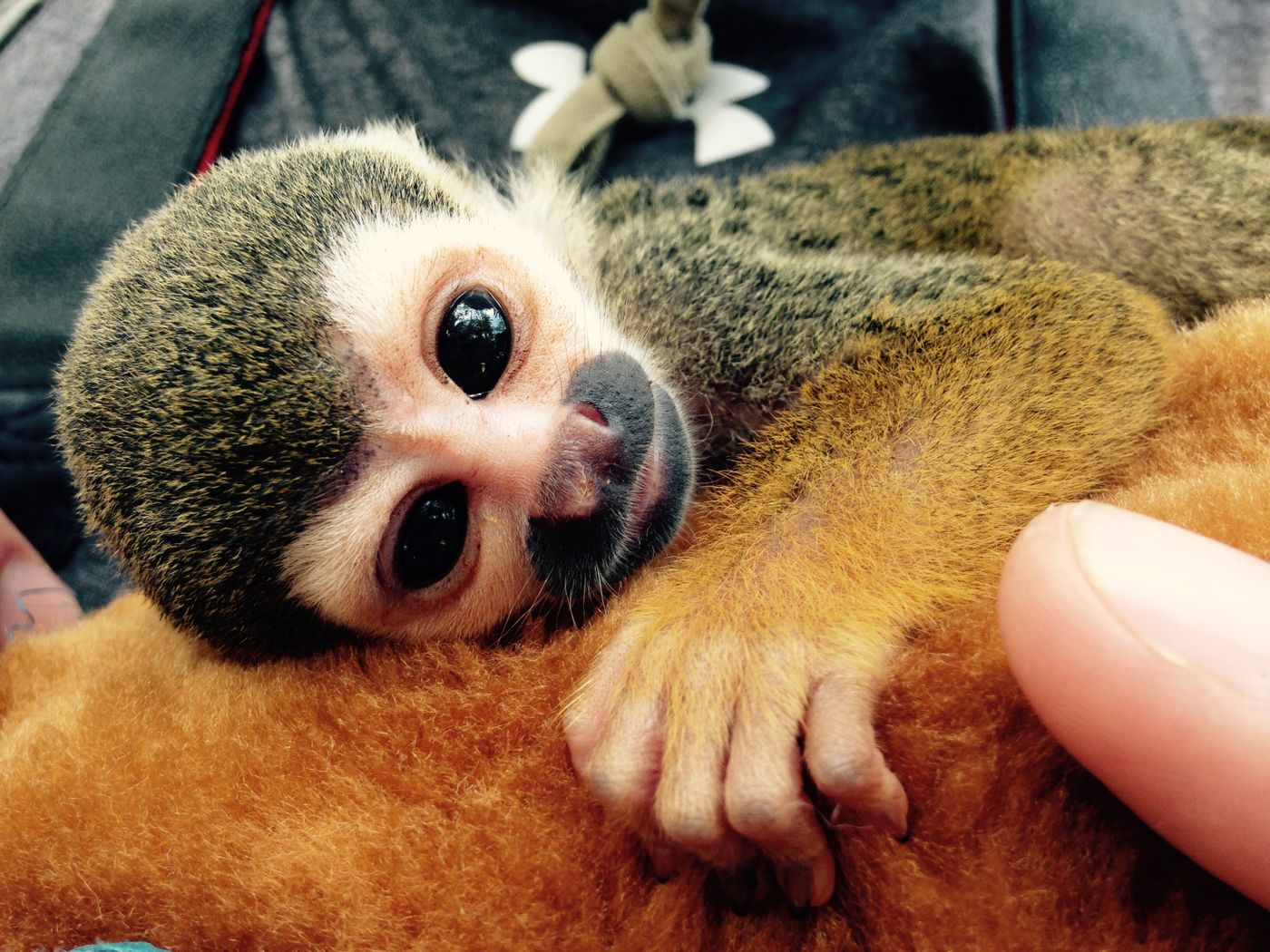
Although the draw of interacting with monkeys in such a hands-on, organic way is what attracts most visitors (although, typically the foundation only receives one group of 3-6 tourists a day, so as to not overwhelm the monkeys), the story and mission of this organization is equally as thrilling from a conservation perspective.
Fundación Maikuchiga began because hunters in several indigenous communities surrounding the basin of the Quebrada Matamatá noticed a decline in megafauna species, particularly los micos churucos, or Woolly Monkeys (Lagothrix lagotricha). From this realization, in 2003 the hunters made a perhaps unprecedented deal: they would stop hunting threatened species, particularly large monkeys. With collaboration from Sara Bennett, a Massachusetts native who has lived in the Colombian Amazon for the last twenty years, sprouted Fundación Maikuchiga, along with “La Casa de los Animales,” or the House of the Animals. As a result of the dedication of the local hunters-turned-conservationists, monkey victims of the illegal wildlife trade started to arrive to the foundation for rehabilitation. Two years later, in 2005, Maikuchiga collaborated with an organization called Corpoamazonia, as well as with the Amacayacu National Park system to expand their responsibilities, creating a program that cares for confiscated illegally trafficked wildlife, particularly monkeys and birds.

This program holds strong today, with monkeys arriving every couple of months to receive the care, love, and support from other primates (both of their own species, and that of the human variety) they need in order to develop their independence. And indeed the independence of each animal that arrives to Maikuchiga is key to the organization’s mission: promoting reintroduction as a conservation method. Every individual monkey has complete autonomy; he or she is free to leave whenever s/he wants. The animals are in no way fenced in or caged. Even within the Casa de los Animales there are very few boundaries except for one large, well-equipped-with-toys quarantine room, which is used for very young, injured, or sick monkeys. With such free roam of the house and the surrounding expanse of jungle, some monkeys might disappear for days and then return to salute the keepers. And although it pains the locals keepers and guides who maintain the property and care for the animals to see individuals go, all are well prepared that this is the ultimate goal of the foundation.
Sitting down with Sara Bennett (who when I first met, I thought must be Jane Goodall’s twin sister), I was able to learn more about the complexities of conservation in a real-world system, where biological, cultural, and economic challenges are delicately intertwined. Originally from Winchester, MA, Sara studied at Dartmouth for her PhD and soon realized she was not meant for academia. So, supported by a National Geographic grant, she headed to the Colombian Amazon - but not for monkeys.
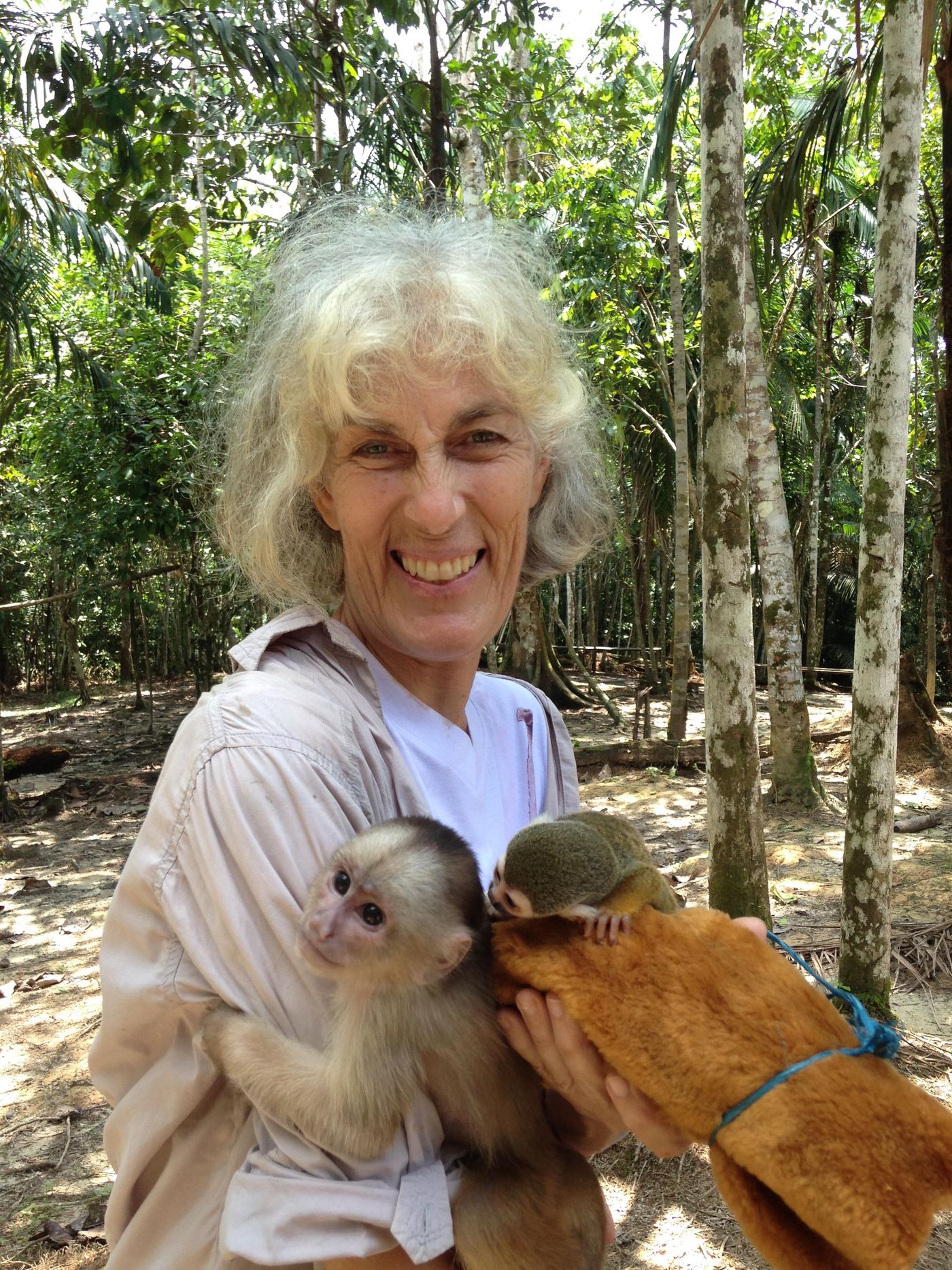
“I originally came here because I was interested in migratory bird ecology, so where better than the neotropics? But then I realized I really knew nothing about birds and so that led to studying seasonal patterns of productivity and flowering and fruit production in tropical canopy trees.” Then trees led back to birds by way of a $1000 grant for “Local Assistance” to research the presence of the wattled curassow (Crax globulosa) in the Mocagua Island lakes. This money was just enough to hire 50 members from three of the surrounding communities to work as research assistants. That was the beginning of her interactions with indigenous hunters. From there, she moved onto fish populations in the freshwater lakes, still collaborating closely with locals.
Eventually, she says, the hunters she was working with on these conservation and research measures, began asking questions about the decline of certain species. These questions turned into the community wide decision to ban hunting endangered animals - in particular Woolly monkeys. “I was an observer. The community was really driving the process,” Sara says, wanting to clarify that this was not one of those white-woman-scientist-comes-in-and-organizes-everything situations. What grew from a need for helpers in various local conservation projects became Fundación Maikuchiga because of efforts on the part of the natives. To this day, Maikuchiga hires local hunters to guide and educate tourists and surrounding communities about the region’s ecology. Furthermore, the organization also employs these hunters as biologists for their ongoing research, monitoring wild populations of Woolly monkeys within the
Parque Nacional Natural Amacayacu.
However, much of the administrative and logistical work is left to Sara - including grant-writing. When I asked about challenges that the foundation is facing, Sara spoke of her concern of what gaps need to be filled before she can retire. Having lived alone with the monkeys in the middle of the Amazon jungle, with little access to internet and no electricity for the past several decades, Sara is nearing her time to return home to her family in Maine. Who will take her place as the English-speaking doctorate with the credentials to guarantee the much-needed grants that supply Maikuchiga with funds for its daily costs? Sara is hoping to split the job between two of her current guides, citing the need for financially responsible people. Nevertheless, they will work something out, for the mission of Maikuchiga is too important to forgo.
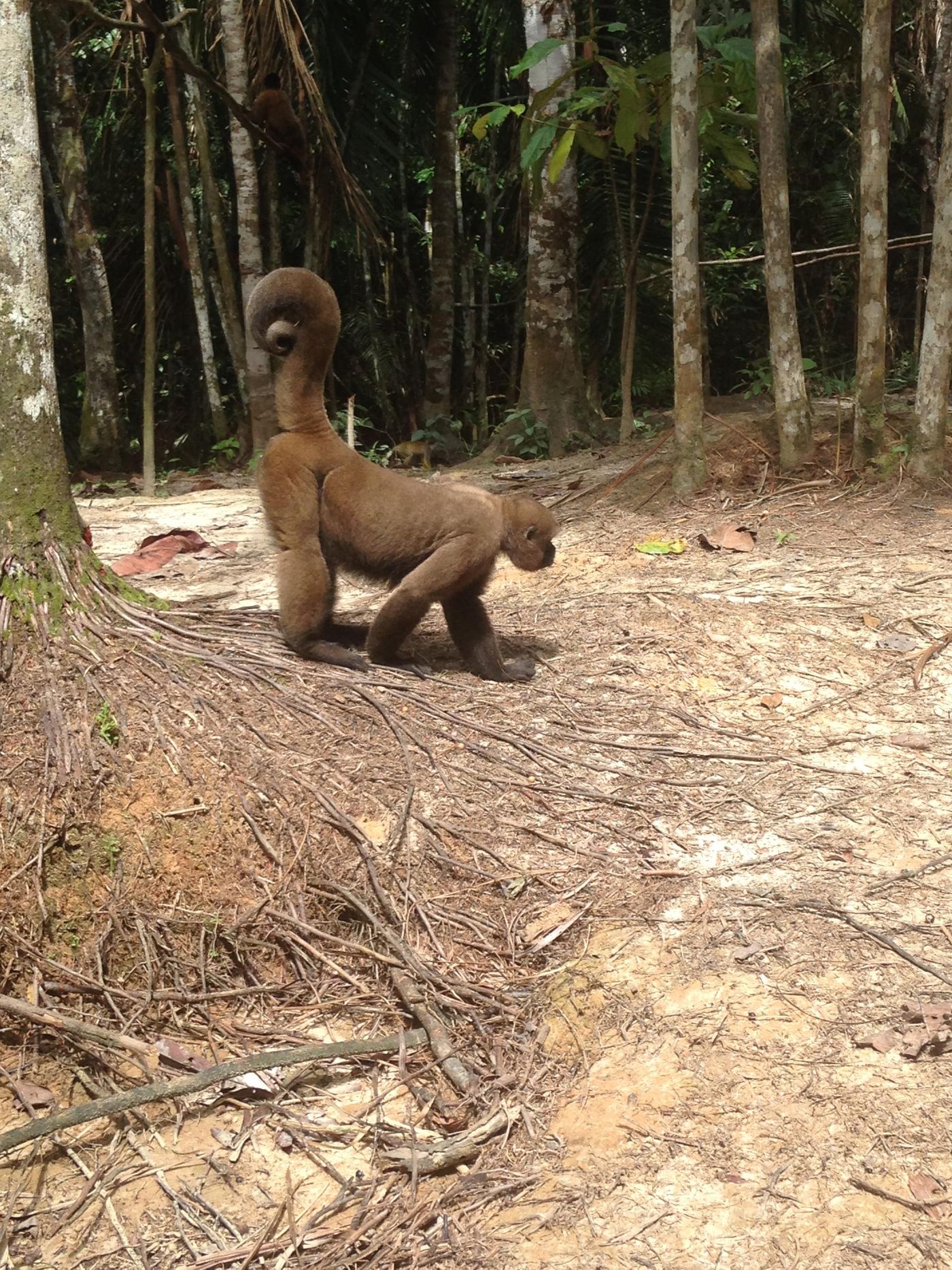
If you are interested in helping disincentivize the commercialization of wildlife, manage the Casa de los Animales and all of its inhabitants, develop programs and materials for environmental education about the Amazon region, assure the continuation of research that utilizes traditional and scientific knowledge, and support participation of community members in sustainable projects, please consider donating to
Fundación Maikuchiga. The work that this organization and its individuals do for the collective good of all of us is understated, and deserves recognition. Like most environmental issues, only those really close to the region see the damage on a daily basis. They are the ones working on all of our behalf, every day, to protect the immense biodiversity of one of the most ecologically complex systems in the world.
Sources:
Fundación Maikuchiga





